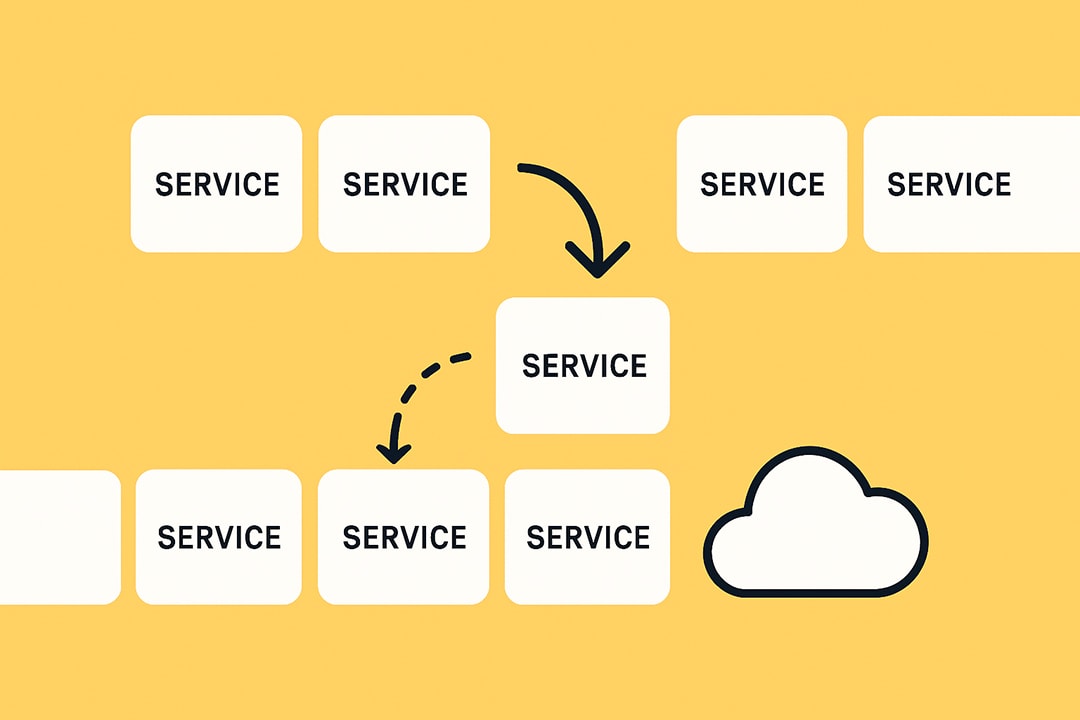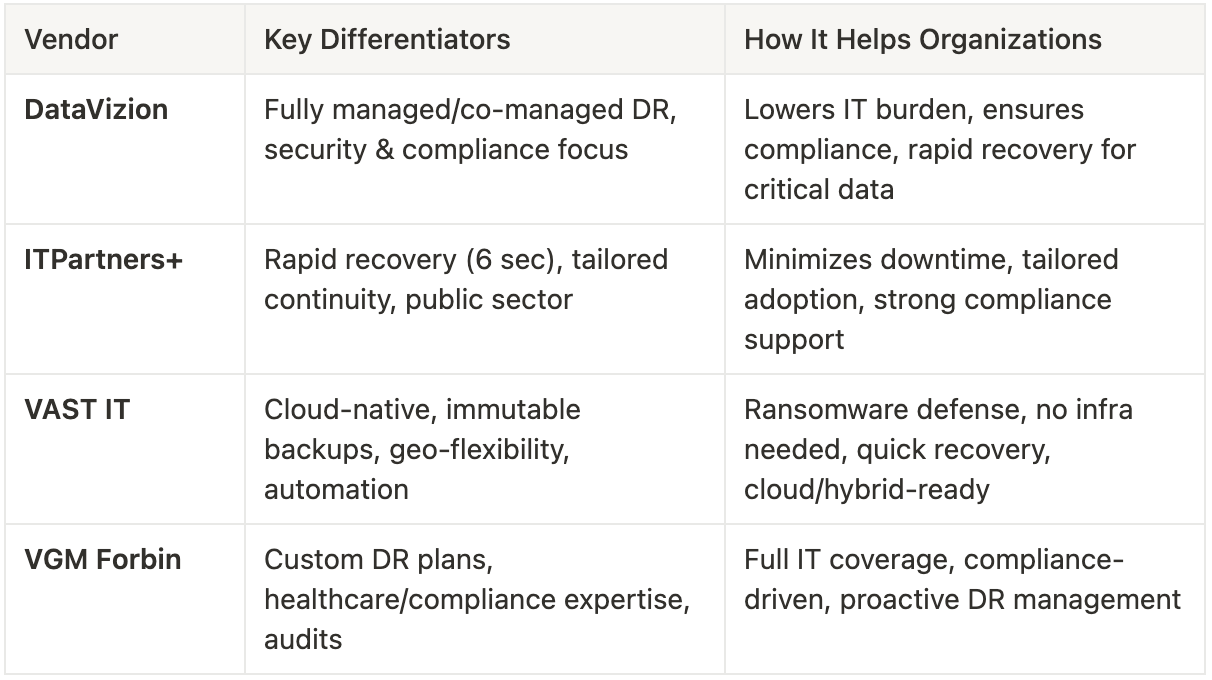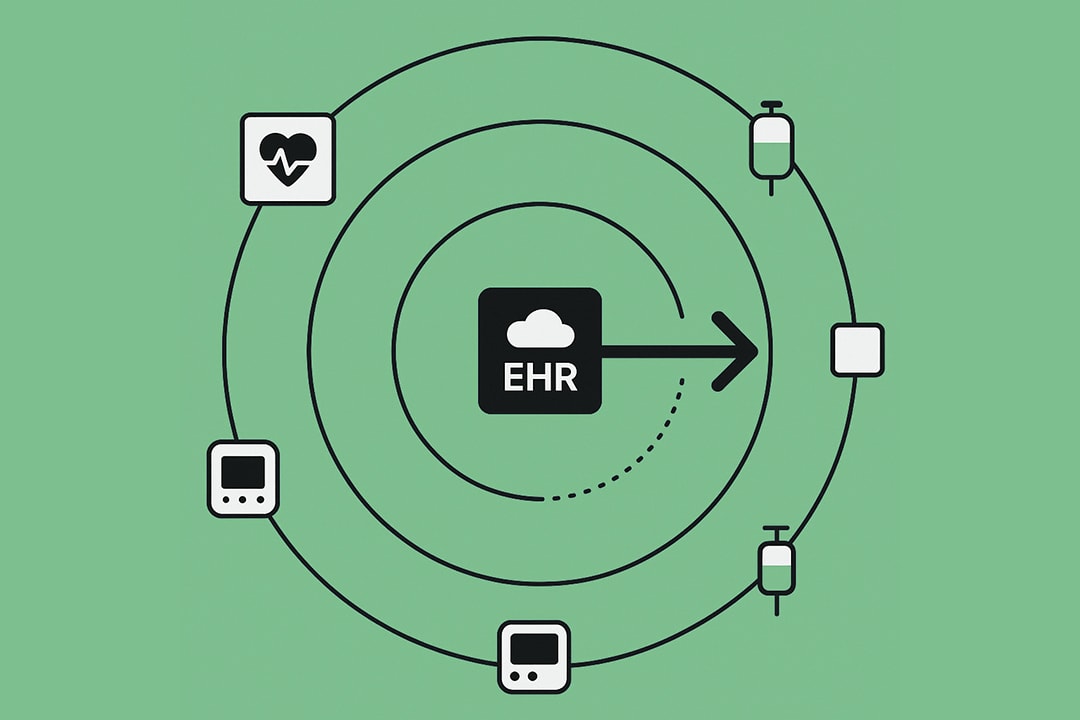How to bulletproof your business with Cloud Backup and Disaster Recovery strategies
Discover practical cloud backup and disaster recovery strategies, real-world best practices, and leading solutions to keep your business resilient in 2025.

Why disaster recovery is essential for modern business
The real cost of downtime
Downtime is not just an inconvenience. It is a business threat with teeth, taking a bite out of revenue, trust, and even the company’s future. In 2025, the numbers are not abstract: global businesses hemorrhage roughly $26.5 billion each year to IT downtime.
For a company with fewer than a thousand employees, every day offline averages $12,500 in losses. And that’s just the direct cost—add regulatory penalties, lost contracts, and the silent churn of frustrated customers and the bill gets steeper.
Why optimism bias is a trap
Why do so many organizations still treat disaster recovery like a budget line item to be trimmed or a compliance box to check? There is a persistent optimism bias in tech leadership, a hope that the worst won’t happen, or at least not on their watch.
But the reality is that disasters, by definition, don’t follow scripts. Whether it’s a datacenter fried by a power surge, ransomware encrypting every byte, or a cloud region disappearing for hours, the impact is immediate and unforgiving.
Smaller companies are not immune
The misconception that only the largest companies need robust DR strategies has been debunked. Research shows small and mid-sized businesses are not just targets, they are often the least prepared. A severe outage and data loss event increases the odds of business closure within a year by nearly 70 percent.
Cyberattacks, especially ransomware, have exploded—up nearly 300 percent in the last five years. The average cost of a major breach now lands between $4 million and $10 million, depending on sector and geography.
Why preparedness is the only option
Modern IT leaders face a hard truth. Every hour spent without a tested, adaptive disaster recovery plan is a liability. The question is no longer if disaster will strike, but when, and how prepared the organization will be to recover with speed, precision, and confidence.
Foundations of an effective Disaster Recovery strategy
How to define disaster recovery for modern IT
Disaster recovery is not just about having a backup file stashed somewhere. It is a comprehensive, living strategy that ensures business operations can resume quickly after anything from hardware failure to a full-blown cyberattack. True DR means the organization is prepared for chaos, not just inconvenience.
- Treat DR as a core part of business continuity, not a last-minute add-on.
- Plan for scenarios both likely and unthinkable: natural disasters, regional outages, ransomware, critical application corruption, and accidental deletion.
Why criticality ranking matters
Not all data and systems are created equal. Trying to protect everything with equal effort is both expensive and ineffective. The smart move is to rank assets and services by business impact—a process often driven by Business Impact Analysis (BIA).
- Identify what truly keeps the lights on: customer portals, production systems, revenue-generating applications.
- Assign criticality scores to each asset or service. For example:
- Mission-critical (e.g., production databases): must be restored first, lowest RTO/RPO.
- Important but less urgent (e.g., internal HR systems): can tolerate longer RTO/RPO.
- Non-essential (e.g., archived marketing files): lowest priority, highest RTO/RPO.
- Use this ranking to allocate DR resources where they matter most, not according to internal politics or legacy habits.
How to set RTO and RPO goals that actually work
Recovery Time Objective (RTO) and Recovery Point Objective (RPO) are not buzzwords. They are operational lifelines. RTO is the maximum downtime your business can stomach. RPO is the maximum data loss, measured in time, that is acceptable before the losses become catastrophic.
- Start with real numbers, not guesses. What is the actual cost of every hour of downtime? What data loss would cripple operations or compliance?
- Calibrate RTO/RPO targets for each asset according to its criticality. For example:
- Customer-facing systems: RTO of 15 minutes, RPO of 5 minutes
- Internal communication: RTO of 4 hours, RPO of 1 hour
- Use these metrics as the north star for building, testing, and improving all DR processes.
Modern DR methods from backups to enterprise-grade solutions
Why the right strategy makes the difference
Disaster recovery is not a one-size-fits-all game. The choice of strategy directly shapes recovery speed, data integrity, and ultimately, business survival. IT leaders today have a spectrum of proven strategies to deploy, each with its own trade-offs of cost, complexity, and resilience.
- Backup and Restore: The most basic approach. Data is copied to a separate location, often offsite or in the cloud. It’s affordable and simple, but comes with higher RTO and RPO. Good enough for non-critical systems or small businesses, but not for always-on operations.
- Pilot Light and Warm Standby: These models introduce a level of preparedness. The pilot light approach spins up critical systems on demand after disaster strikes, keeping only essential services running until full recovery. Warm standby goes further, keeping a live but lightly loaded replica ready to take over. Both options sharply reduce downtime, but require more ongoing investment and maintenance.
- Multi-Region Active/Active: The gold standard for organizations that cannot afford downtime. Systems run simultaneously in multiple regions, so traffic seamlessly reroutes if one fails. Recovery is instant, data loss is near zero, and business continuity remains unbroken. The trade-off: this approach is expensive and operationally demanding.
How Infrastructure as Code transforms DR
Infrastructure as Code (IaC) has rewritten the rules of disaster recovery. Gone are the days of manually rebuilding environments after outages. With tools like Terraform, AWS CloudFormation, and Kubernetes, entire infrastructures can be versioned, automated, and recreated in minutes.
- IaC enables rapid, repeatable, and consistent recovery—no more scrambling or guesswork.
- Multi-region and multi-cloud deployments become practical, not just aspirational.
- Automated failover, parallel rebuilds, and granular component restoration are all within reach.
Why testing Is the backbone of resilience
A DR plan that lives in a binder or a code repository is only as good as its last test. Regular, rigorous testing exposes gaps, validates assumptions, and ensures readiness in the real world.
- Tabletop exercises force teams to walk through disaster scenarios and spot weaknesses.
- Infrastructure recovery drills create live environments using IaC, verifying true recoverability.
- Drift detection and pipeline tests catch silent failures before they become public debacles.
Modern DR is not just about having a plan. It is about having a living, breathing system tested against chaos, proven to work, and ready to adapt.
Best practices for DR readiness
How to build real-world resilience
- Adopt a DR Maturity Model: Move beyond ad-hoc and reactive approaches. Progress systematically from basic backups to automated, multi-region failover strategies. Know where your organization stands and set clear targets for advancing maturity.
- Prioritize by Business Value: Focus DR investment on the assets that drive revenue and reputation. Leverage your criticality rankings and RTO/RPO data to make decisions that matter when it counts.
- Communicate the Why: Frame DR in terms of business impact—lost revenue, eroded trust, and regulatory exposure. Translate technical risk into consequences that resonate with leadership.
- Test, Document, Repeat: Regularly run drills, automate tests where possible, and document every lesson learned. Measure MTTR, test success rates, and system coverage to ensure continuous progress.
- Foster Transparency and Buy-In: Share plans, metrics, and improvement areas across teams and up to the C-suite. Make disaster recovery a collective responsibility, not just IT’s problem to solve.
Cutting corners on DR is not a strategy; it is a liability. The organizations that prove most resilient are those that treat disaster recovery as an evolving discipline—measured, tested, and always improving.
Let’s look at some solution providers that can help plan, execute, and implement an effective DR strategy for you.
Cloud backup and Disaster Recovery (DR) solutions
1. DataVizion: Managed Backup & Disaster Recovery
How it stands out:
- Fully Managed Approach: DataVizion delivers end-to-end DR as a managed service, handling everything from backup scheduling to ongoing monitoring and recovery.
- Co-Managed Flexibility: Can partner with internal IT teams, providing a hybrid support model that augments in-house capabilities.
- Security Focus: Emphasizes data safety, integrity, and compliance, making it suitable for regulated industries.
- Critical Data Coverage: Specifically targets mission-critical business data, ensuring it’s both well-protected and quickly recoverable after a disaster.
How it helps:
- Reduces the complexity and burden on internal IT teams.
- Ensures business continuity through reliable, regularly tested backups and recovery processes.
- Offers peace of mind with compliance-ready, secure storage and procedures.
2. ITPartners+: Backup & Business Continuity
How it stands out:
- Rapid Recovery Capabilities: Backups can be performed every five minutes with recovery possible in as little as six seconds, minimizing downtime remarkably.
- Customizable, Evolving Solutions: Continuity plans are tailored to business needs and updated to address emerging threats.
- Full-Service Spectrum: Includes consulting, managed services, security, and co-managed options for different business sizes and structures.
- Public Sector & Compliance: Offers specialized solutions for government and highly regulated sectors.
How it helps:
- Maximizes uptime and minimizes data loss, ensuring organizations can recover almost instantly from interruptions.
- Eases adoption and integration thanks to tailored, scalable plans.
- Supports compliance and regulatory requirements, reducing risk for sensitive industries.
3. VAST IT Services: Cloud Backup as a Service (CBaaS)
How it stands out:
- Enterprise-Grade Cloud DR: Combines snapshots, backups, and automated DR at scale, supporting both hybrid and cloud-native environments.
- Immutability & Ransomware Defense: Provides immutable backups—critical for countering modern ransomware threats.
- Geographic Flexibility: Enables recovery in alternate regions, ensuring true business continuity even in regional disasters.
- Simplicity & Automation: Eliminates the need for dedicated backup infrastructure; leverages automation for efficiency and reliability.
How it helps:
- Reduces both CapEx and OpEx by eliminating the need for on-premises backup hardware.
- Enhances resilience to new cyber threats (e.g., ransomware) with immutable, secure backup design.
- Supports rapid, flexible recovery options from anywhere, which is vital for distributed or remote workforces.
4. VGM Forbin: Disaster Recovery Solutions
How it stands out:
- Custom DR Planning: Builds tailored disaster recovery plans for devices, files, and infrastructure.
- Healthcare & Compliance Expertise: Deep experience with healthcare and other compliance-heavy industries (HIPAA, PCI, GDPR).
- Proactive Managed Services: Offers ongoing monitoring, regular data backups, and audits to ensure DR readiness.
- Integration with Broader IT Services: Disaster recovery is part of a broader managed IT offering, including security, compliance, and support.
How it helps:
- Provides a holistic, compliant DR approach ideal for healthcare and regulated sectors.
- Ensures all parts of the IT environment (devices, files, apps) are covered, not just data.
- Streamlines DR with ongoing audits and proactive management, reducing the risk of unexpected failures.
At a glance

Each of these DR vendors brings something unique:
- DataVizion and ITPartners+ emphasize managed, customizable solutions with rapid recovery and compliance.
- VAST IT Services stands out with enterprise-grade, immutable, and geographically flexible cloud backup.
- VGM Forbin excels in tailored planning and ongoing management, especially for compliance-heavy sectors.
Choosing the right solution depends on your business’s size, sector, regulatory needs, and risk tolerance. Of course, finding the right fit requires a lot more scrutiny, more decision makers, and definitely more options. You can explore hundreds of solution providers on TechnologyMatch and reach out to them when you’re ready. No rush, no cold reachouts.
Explore and discover Cloud backup and Disaster Recovery solutions on TechnologyMatch.
FAQ
What is disaster recovery and why is it important for businesses?
Disaster recovery (DR) is a set of strategies and tools designed to restore IT systems and data after outages, cyberattacks, or disasters. It is critical because downtime leads to lost revenue, compliance risks, and reputational damage, making DR essential for business continuity.
How do I determine the right RTO and RPO for my organization?
Identify and rank your business’s critical assets with a Business Impact Analysis, then calculate the maximum downtime (RTO) and acceptable data loss (RPO) your business can tolerate. Set specific targets based on the impact of outages to guide your DR planning.
What are the most effective disaster recovery strategies in 2025?
The most effective DR strategies include hybrid cloud backup, immutable storage, pilot light and warm standby setups, and multi-region active/active environments. Infrastructure as Code (IaC) and automated failover are increasingly essential for speed and consistency.
Why is regular disaster recovery testing necessary?
Frequent DR testing uncovers vulnerabilities, validates your recovery processes, and ensures your plan works in real-world scenarios. Organizations that test regularly recover faster and lose less data during actual incidents.
Which providers offer reliable cloud backup and disaster recovery solutions?
Top providers include DataVizion, ITPartners+, VAST IT Services, and VGM Forbin. Each delivers robust cloud backup, rapid recovery, and DR solutions tailored to various business needs and compliance requirements.





